Our favourite places to stay on this sleepy Cebu island.
15 Mosques in the Philippines You Should Know About

With the Philippines being a melting pot of cultures, it’s unsurprising that it’s home to many majestic structures — places of worship included. Both Catholic churches and mosques in the Philippines have long been celebrated, not only for their beauty, but also for their cultural significance.
Also read: 15 Must-Visit Museums in the Philippines to Celebrate Pinoy Heritage and History
Magnificent mosques in the Philippines
1. The Grand Mosque (Sultan Haji Hassanal Bolkiah Mosque) — Cotabato City
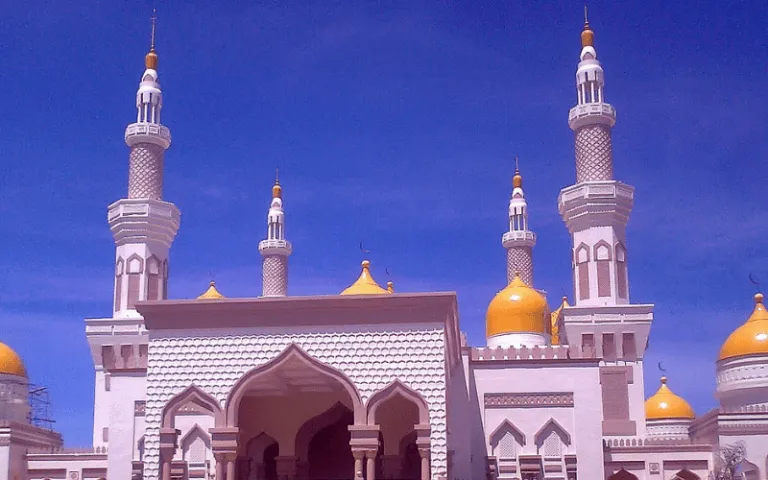
The Grand Mosque of Cotabato is the largest mosque in the Philippines. It occupies a 5,000sqm of land area and towers over 40 metres high. Amazingly, it can even accommodate up to 15,000 worshippers at a time! Today, both Muslims and Christians maintain the mosque.
Filipino architect firm Palafox Associates designed the mosque with multiple gold domes and minarets. Officially named after the Sultan of Brunei, who donated over US$40 million for the building, Sultan Haji Hassanal Bolkiah Mosque is definitely an eye-catching sight beyond its size.
2. The Golden Mosque (Masjid Al-Dahab) — Manila, Metro Manila
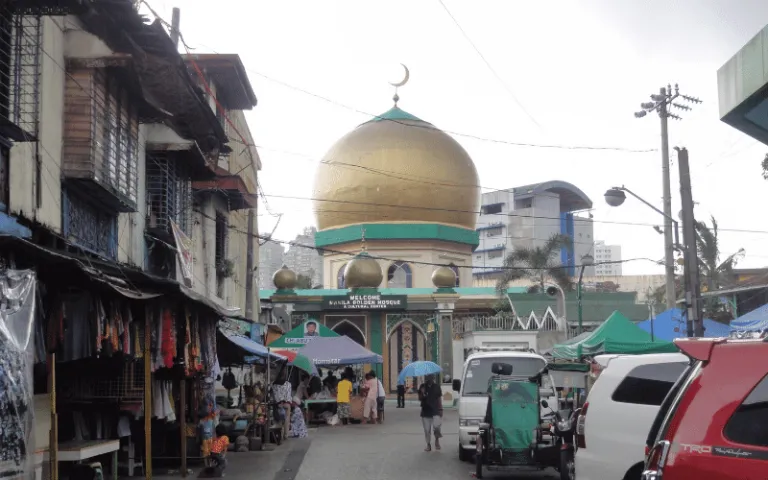
Amid Manila’s bustling streets stand the Golden Mosque, easily recognisable as the largest mosque in Metro Manila. Adorned with a gold dome and stained glass, the masjid stands out even from across the Pasig River. Formerly, the mosque even had a minaret and a fountain that added to its grandeur. Today, the administrators await the rehabilitation of the structure.
Because of its size and proximity, the Golden Mosque regularly gathers several Filipino Muslims to worship. Mindanaoan restaurants also surround the place to welcome devotees.
3. The Pink Mosque (Dimaukom Mosque) — Datu Saudi Ampatuan, Maguindanao
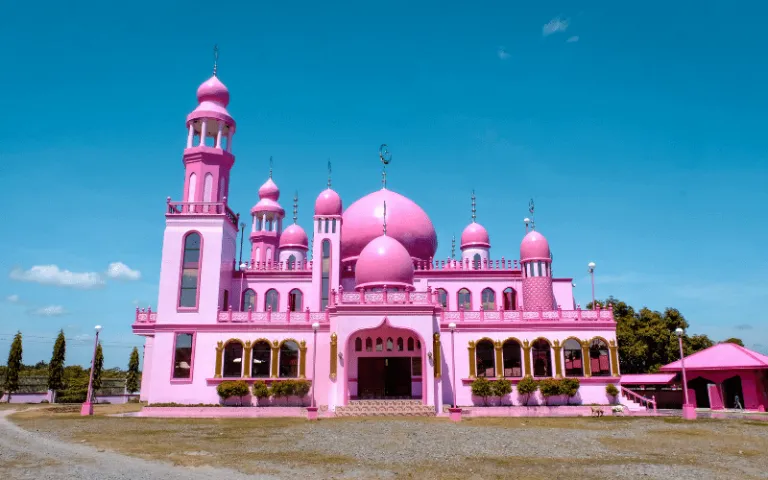
Built in 2014, the Dimaukom Mosque now stands on the old property of then-Mayor Samsudin Dimaukom. Painted remarkably pink, which effortlessly attracts passersby, the homonymous mosque represents a colour believed to symbolise peace and love. Both Muslims and Christians built this place of worship, further emphasising the unity of different faiths.
4. Sheik Karimol Makdum Mosque (Sheikh Karim al Makhdum Mosque) — Simunul, Tawi-Tawi
The Sheik Karimol Makdum Mosque is the first and oldest mosque in the Philippines and in Southeast Asia. Built in 1380, the mosque has withstood even the antique churches in the country.
In 2012, the National Historical Commission of the Philippines (NHCP) recognised the mosque as a National Historical Landmark by t. Its location has also been designated as a National Cultural Treasure.
Also read: Tawi-Tawi: Why You Should Visit the Philippines’ Southernmost Province
5. Taluksangay Mosque — Zamboanga City
Known to be symbolic for Moros, red domes mark the Taluksangay Mosque. Built in 1885, the masjid stands as the oldest mosque in the region of Zamboanga.
Located in a coastal area, the Taluksangay Mosque also has a neighbouring emerald river that attracts travellers to visit. Aside from being a known tourist spot in Zamboanga City, Taluksangay Mosque is also considered a centre for Islamic propagation.
6. Marawi Grand Mosque — Marawi City, Lanao del Sur
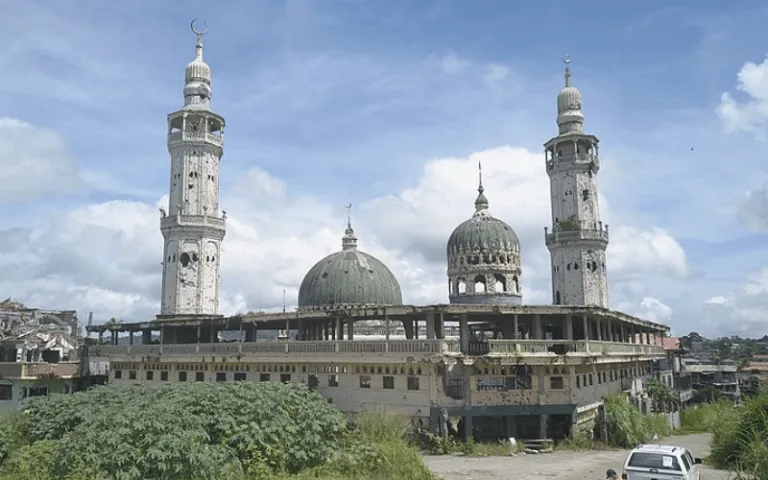
Covering an area of 2,500sqm, Marawi Grand Mosque is the biggest mosque in Marawi City. With three floors, the masjid originally had the capacity for 5,000 people. Painted with different shades of green, the traditional colour of Islam, the palette of the mosque depicts a state of paradise. Patterns and other painted details emblazoned on its minarets elevate the structure even more.
The Marawi Grand Mosque was, unfortunately, one of the many mosques in Marawi that was destroyed during the 2017 siege. Thankfully, its rehabilitation is ongoing as of writing, along with the other mosques in Marawi that were destroyed.
7. Bacolod Grande Mosque — Bacolod-Kalawi, Lanao del Sur

Another striking green mosque in Mindanao, the Bacolod Grande Mosque wears delicate patterns and stunning minarets. In the mid-1990s, this mosque was considered the mecca of Lanao del Sur.
Aside from its beautiful exteriors and interiors, the Bacolod Grande Mosque also sits beside the tranquil Lake Lanao. According to travellers, the lake breeze usually makes its way into the masjid, offering a serene experience of the area.
Also read: Bacolod Tourist Spots: 10 Things to Do for Foodies & History Buffs
8. Tulay Central Mosque (Masjid Tulay) — Jolo, Sulu
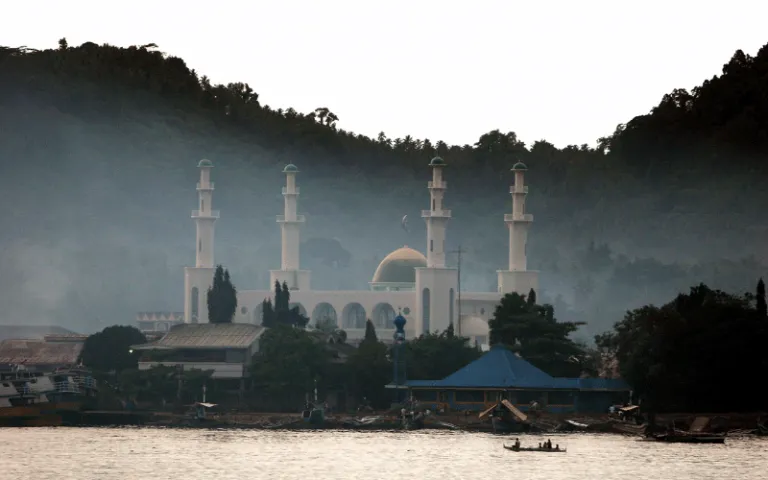
A tourist destination in Jolo, the Tulay Central Mosque is the biggest and oldest mosque in Sulu. Built in 1884, the masjid was destroyed in a 1974 war and was rebuilt in 2001. Today, the Tulay Central Mosque can accommodate over 5,000 people at a time; which is only apt as the province has one of the biggest Muslim populations in the Philippines.
The mosque has a rooftop, from which visitors can marvel at the bustling streets of the town. It also faces a beautiful view of the sea and stands against a stunning mountain panorama.
9. Taviran Pusaka Mosque (Masjid Datu Untong Balabaran of Taviran) — Datu Odin Sinsuat, Maguindanao
The Taviran Pusaka Mosque is notable for its distinct design: Instead of a majestic structure with grand domes, the masjid sports an old pagoda style. Built in the 19th century, the Taviran Pusaka Mosque is one of the last-standing pagoda-style mosques in the Philippines.
10. The Blue Mosque (Sultan Ahmed Mosque) — Taguig, Metro Manila
Another significant mosque in Metro Manila, the Blue Mosque is a religious landmark in Taguig. It regularly sees both Filipino and non-Filipino Muslims gather for worship and other socio-civic assemblies.
The Blue Mosque has a conference room, madrasa rooms, a library, a clinic, and an imam’s office. Designed by Filipino architect Angel Nakpil, the masjid has a geometrical design inspired by the Córdoba in Spain.
11. Kaum Purnah Mosque – Isabela City, Basilan
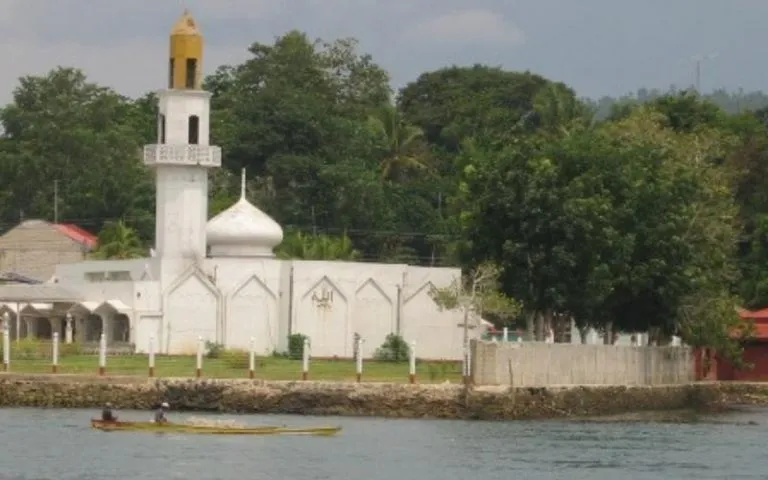
Kaum Purnah is one of the most interesting and important mosques in the Philippines. You can easily see it when sailing into the Isabela Strait. It also happens to be the oldest masjid in Basilan and has long been considered the capital of the Islamic faith in the province.
Nearby is a fishing village with a prominent wet market for fresh seafood. This village also happens to have housed Chinese refugees coming in from Fujian province during the Chinese Civil War in the early 1950s. Expect a mix of Chinese and Islamic influences, especially in their food.
12. Masjid Al-Nasser Abpi (the White Mosque) – Datu Odin Sinsuat, Maguindanao
Masjid Al-Nasser Abpi proves that there is beauty in simplicity. Also known as the White Mosque, the mosque has a colour that represents two invaluable tenets of the Islamic faith: purity and peace. It is especially beautiful in the afternoon during sunset, as its striking white hues stand out while the sun dims.
13. Hadja Sitti Raya Mosque – Talipao, Sulu
The architecture exhibited in the Hadja Sitti Raya Mosque is a breathtaking expression of devotion to the Islamic faith. Its simple white-coloured walls are adorned with many different patterns that make the mosque so vibrant. These different inspirations used for the mosque highlight the many different cultures of Islam in Sulu.
14. The Little White Mosque by the Sea – Bongao, Tawi-Tawi
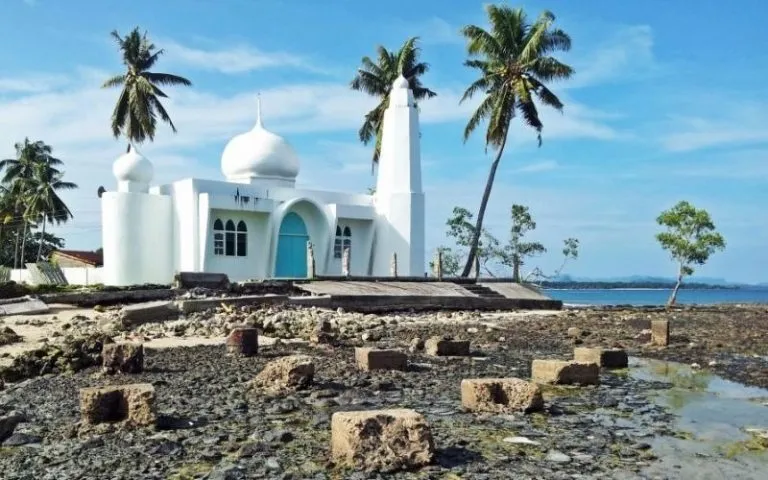
While not as grand as the other mosques on this list, the Little White Mosque by the Sea boasts of solitude that might prove appealing for some. Its name definitely gives away what to expect, but seeing this humble mosque in person is undeniably a transcendent experience. If meditating by the sea sounds wonderful to you, consider sailing to Bongao, Tawi-Tawi and visit this place of worship.
15. Sharief Alawi Mosque – Barangay Balulang, Cagayan De Oro
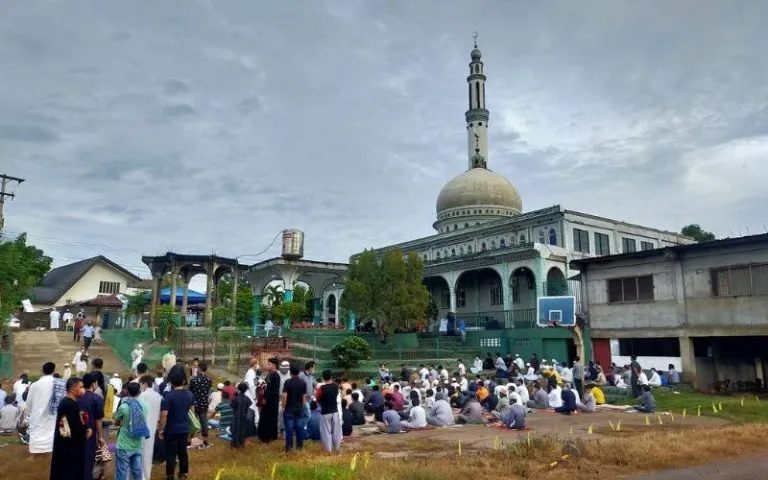
One of the most historic mosques in the Philippines, Sharief Alawi Mosque is the biggest mosque in Northern Mindanao in terms of land area. It was built in 1996 by the Moros who migrated during the height of the armed conflict that plagued Bangsamoro. The complex grew more buildings, all of which have different functions to administer its community. It has a gold-coloured dome, while its walls wear a white and green coat of paint representing Islam.
Also read: 15 Festivals in the Philippines to Anticipate Every Month
Beyond this list, there are countless more magnificent mosques in the Philippines. Have you been to any of these before? Let us know in the comments.
Featured image credit: acrylik via Canva Pro
Published at
About Author
Danielle Uy
Subscribe our Newsletter
Get our weekly tips and travel news!
Recommended Articles
10 Bantayan Island Resorts, Hotels, and Rentals for Your Tropical Escape 14 Best Credit Cards for Travel in the Philippines The only plastic we need for travel.
10 Best Mountain Cafes in the Philippines for Your Peak Coffee Experience Coffee date on the mountains, anyone?
10 Fairytale Castles In Europe Filipinos Need To See! Permission to feel like royalty even for a day?!
10 Family Outing Ideas in Metro Manila Under ₱500 Looking for a weekend bonding with the family under ₱500? Head to these places, pronto!
Latest Articles
Complete Guide to Manjuyod Sandbar: The Maldives of the Philippines Discover the Maldives of the Philippines at Manjuyod Sandbar, an island that disappears.
Pope Francis Dies at 88 After Illness Remembering his travels and legacy
Mother’s Wonderland: Quezon Province’s Fantasy Theme Park Explore a magical theme park in Tayabas filled with nature, art, and fantasy
Kayangan Lake in Coron, Palawan: Everything You Need to Know Dive into the crystal-clear magic of Kayangan Lake, the crown jewel of Coron, Palawan!
Dingalan Travel Guide: Nature Spots to Discover Now Underrated coastal gem in Aurora

